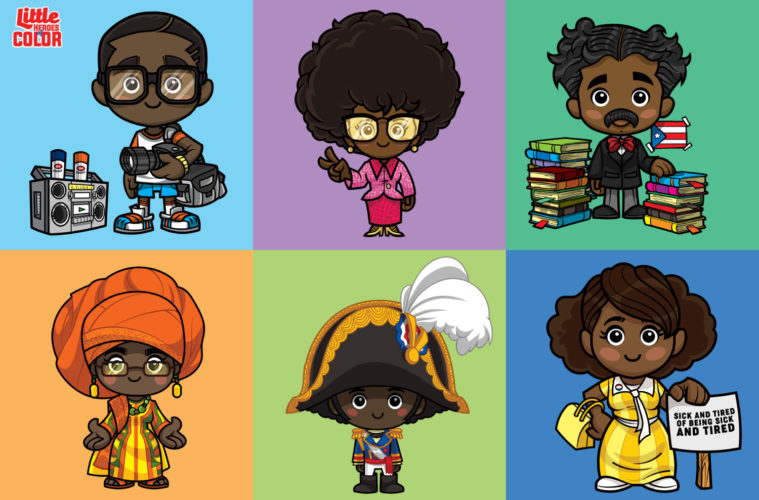David Heredia’s Heroes of Color arts education company uses the appeal and verve of comic books, animation and online world-building to teach K-12 students about the rich histories of their communities, empower young artists, and offer professionals the development tools and platform to promote cultural inclusion in their own careers. As Heredia tells L.A. Weekly, Heroes’ origin story reads a little like a comic book itself.
During the worst months of the pandemic, Heredia says, “I was just trying to figure out what everybody else was trying to figure out — how to survive.” Then he started getting calls. Schools from elementary level to colleges were reaching out to him, because they had seen his books like Little Heroes of Color that specifically speak to representation, pride and joy, his Art Activism conference work, or the inclusion workshops he was doing for companies, and they were having issues of race that they felt he could help them address.
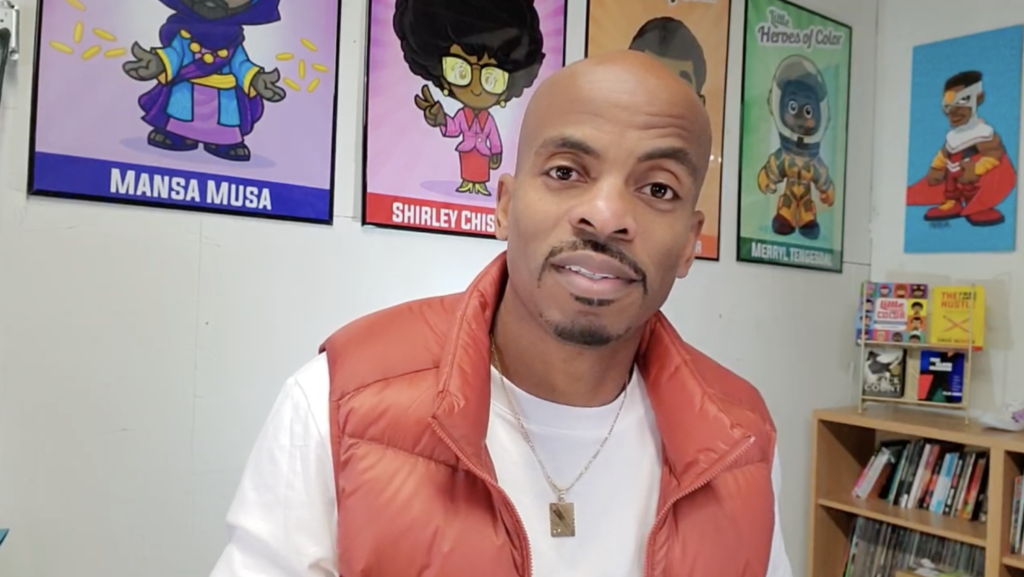
David Heredia conducts an online workshop
It was less about campus culture and more, as Heredia says, “that the students are artists and the question that kept coming up for them was that they wanted to express how they feel in their work, but they were afraid to do it. Their thesis film is their calling card to the industry, and maybe Nickelodeon or Warner Bros. may not hire you if your film is about police brutality, you know. So how do they navigate that? Do they hide what they’re feeling, or do they just openly express it?”
Leading those conversations made a big impression on Heredia. And then he came across a lady on Instagram doing similar workshops on race with children on race, and he thought he should check it out. “I wanted to see one of the workshops. You know, I have three kids and I told them to come be a part of it. So we’re sitting there watching this woman in action and she says, ‘I used three books in my workshop to help teach kids about race.’ She picks up the first one, she picks up the second one, and you’re not going to believe what the third book was. She picked up the Little Heroes of Color book and I was like, I’m in another world right now.” He realized he could design his own workshops for kids, and conduct them remotely — answering not only the question of the urgently needed subject matter, but also the question of reaching students forced into remote learning situations.
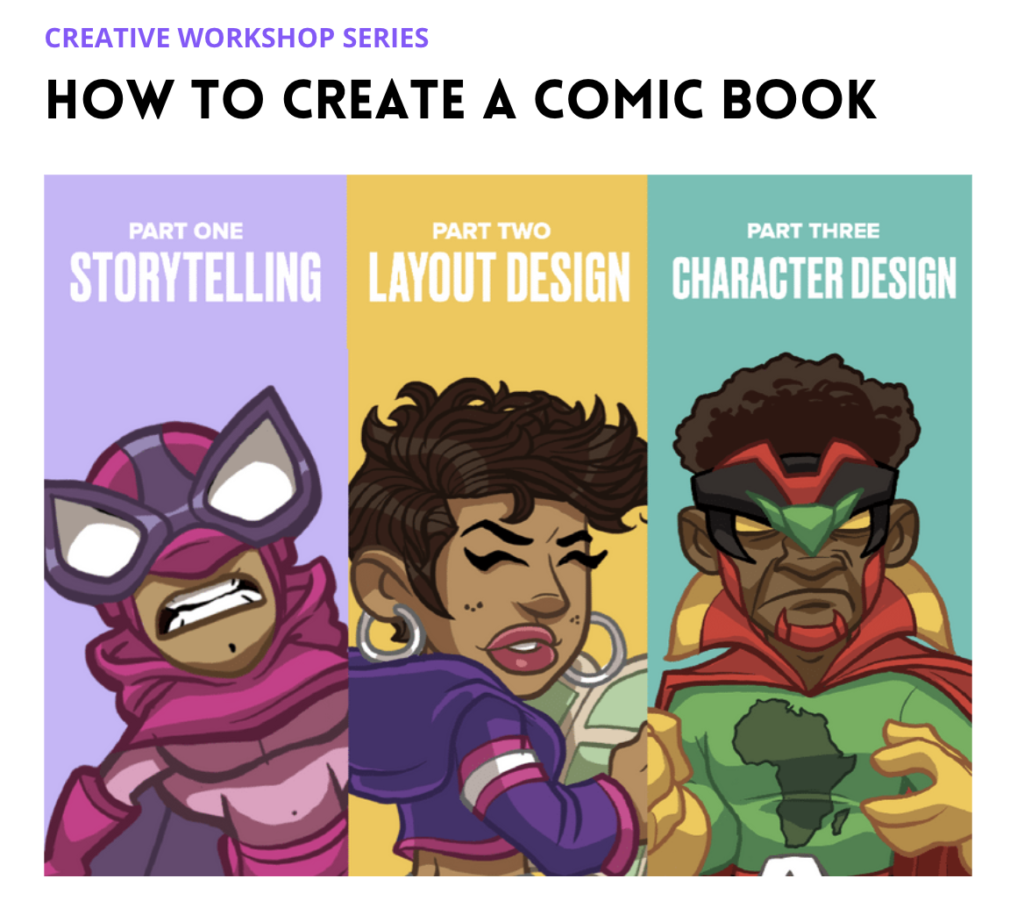
Heroes of Color
While in many ways the confluence of pandemic circumstances and social justice reckonings woke people up to the value of Heredia’s vision, he’d been at it for years before the current scourge of racist academic censorship came into play. (His book hasn’t been banned from a third-grade library yet, but give it time.)
“I did a video in 2015, which was part of what became the Heroes of Color Video Series,” says Heredia. “There are four episodes. The first one was on the Harlem Hellfighters, an all-Black military unit that fought in World War One. Now the reason for even creating this was because of something that happened to my daughter in school. She was told in kindergarten that she was brown-skinned and ‘they don’t like brown-skinned people.’ Another child told her that. So I was angry and I was also very confused because I thought well, I knew that it was inevitable. It was going to happen, but not so young. So I was like, okay, you know what, I need to do a better job at letting my daughter know that there are so many people who look like her who have done remarkable things and that they’re not only athletes or singers or dancers, they’re intellectual people as well, scientistic and writers.”
So he started digging up some research, and around this time, his son who is interested in comic books wanted to know if there are any Latino Black superheroes. “So I’m searching for that, too,” he says, “and in my search, I googled ‘heroes of color.’ That’s what I googled and I started getting the names of real people, not comic book people, and I’m like, oh, this is, this is nuts, you know! I’m college-educated and I’ve never heard of half of these people. And that’s when I formed my company, Heroes of Color. And I did that first video and I think it was almost like therapy. I felt I had so much on my shoulders, and when I made that video I released it all. I didn’t care what anybody thought.”
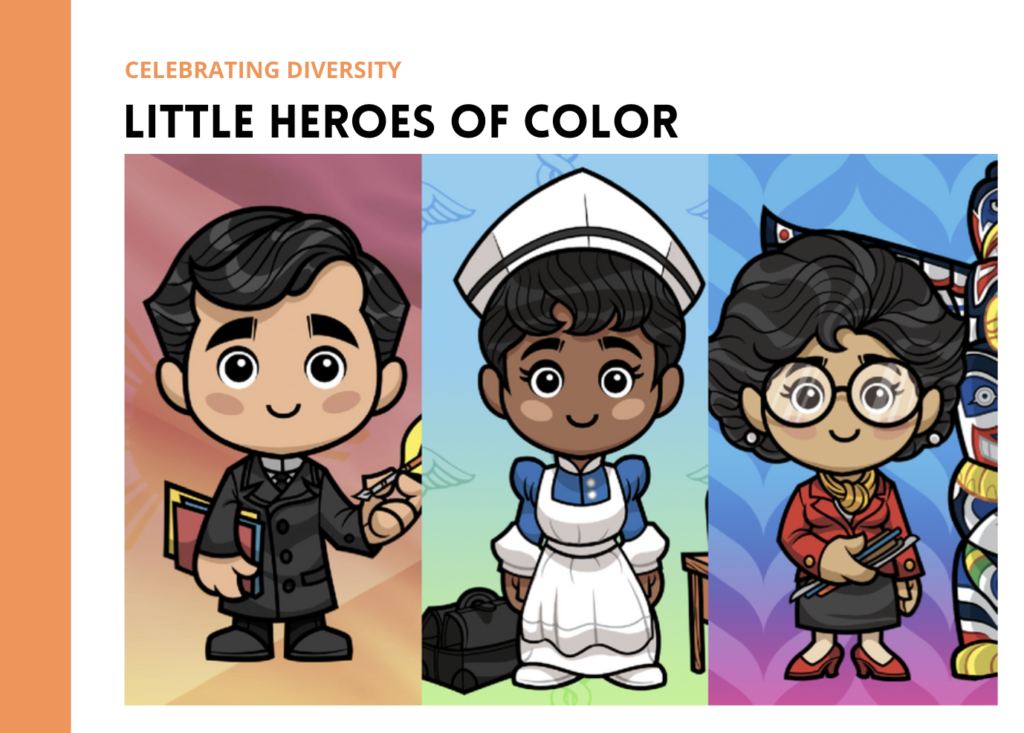
Heroes of Color
That was seven years ago. In January, Little Heroes was featured in the Brooklyn Museum and the New York Times; and the day of the interview, Heredia had already conducted one workshop. In fact, he’s been tapped for so many by so many different schools in New York, and increasingly closer to home in Los Angeles, that he’s hardly had time to draw in months. Instead, it’s been all about what the kids are creating.
“The reason why it keeps getting picked up is not because of the art of creating a comic book. It’s the power that we’re putting back in the hands of the children to tell their stories and express themselves the way they want, and to show the heroes that they want to see,” Heredia says. “So we’re not dictating to them: Superman looks like this, Wonder Woman looks like this. We’re giving them that power, that control. Man, you had to see these kids.” They were tapping into superpowers that all of us have, like kindness, empathy and love. He reminds the students how their teachers have been to hell and back for them, just like their grandparents who immigrated for a better life, like their fathers, mothers and brothers who’re helping you with the homework when they don’t even understand fifth-grade math anymore.
At the end, he asked for volunteers to come up and show some of their comic pages and they were fighting to come up to show their art. At the end, two students came up and said their comic book was “about a woman who has the power to make people feel loved, because sometimes people are really angry or really sad and they don’t understand that they are loved. So this superhero gives people that to make them feel like that. I’m like wow, that’s amazing. Who’s that character? They’re like, that’s our mom.”
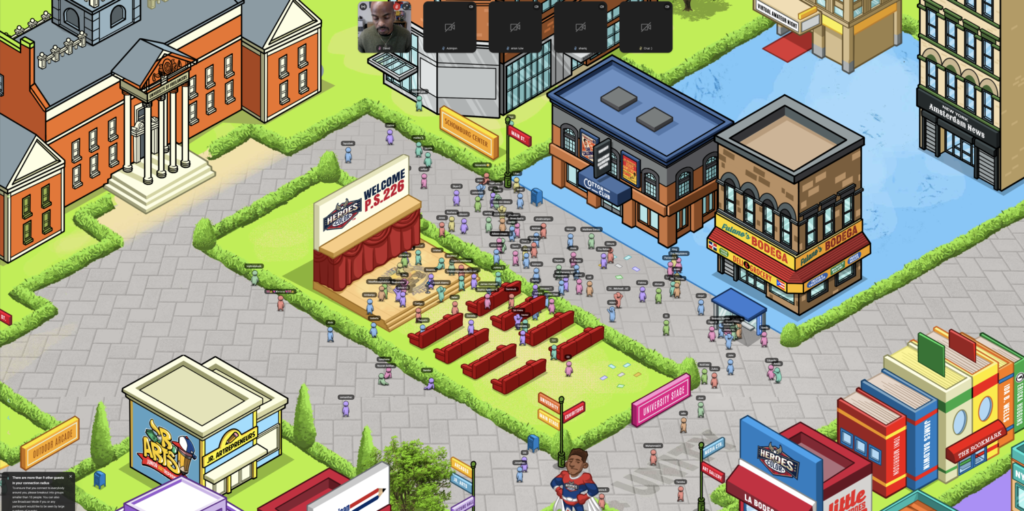
New York Heroes of Color virtual world in session
Heredia’s also building a virtual world and in a platform called Topia, a 2-D virtual world called New York’s Heroes of Color. It populates with all of the historical landmarks or organizations that were either founded by or operated by people of color. For example, it has Central Park, but it’s not called Central Park. It’s called Seneca Village because the original group of people living there were Black, they owned property and settled there until the city kicked them out. Barbershops, bookstores, bodegas, historic sites like the Cotton Club and public monuments are all laid out like a video game, and each spot opens up into more information links, photographs, videos and audio going into more detail on the places and the people who founded them. The last workshop he did “there” had 160 students in the world together, experiencing learning like a multiplayer game, talking to each other inside. “The reason why I use cartoons,” he says, “is because everybody loves a cartoon! It’s so easily digestible, but once you get into it, you’re like holy smokes, this is actually teaching.”
One time, one of the students came up to do her presentation at the end, and said she’d just learned about this pilot who was one of the first African American pilots — a woman who had to basically teach herself French so she could go to Europe, because in the United States they wouldn’t accept her into the schools. So she had to go to France to learn how to fly. She had to learn the language and then come back with the license. All of this information was in Heredia’s Topia-based world. “Afterwards,” he says, “the school asked if I could keep this world open for another few days, because they wanted their teaching staff to come in and experience it, too. So now I’m building. Because I think it has that much potential to make an impact.”
For more information visit heroesofcolor.com and Twitter at @_heroesofcolor.
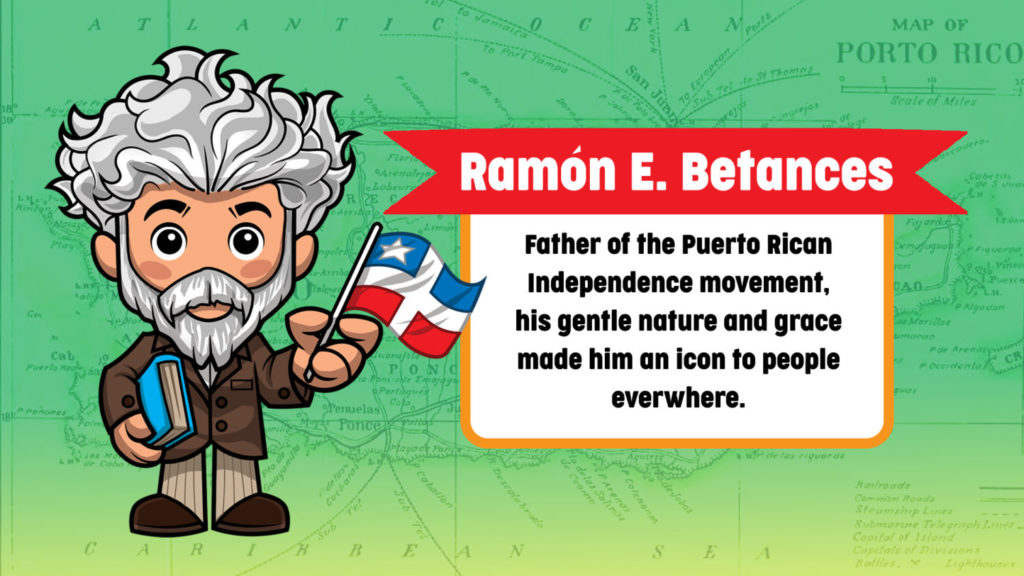
Heroes of Color
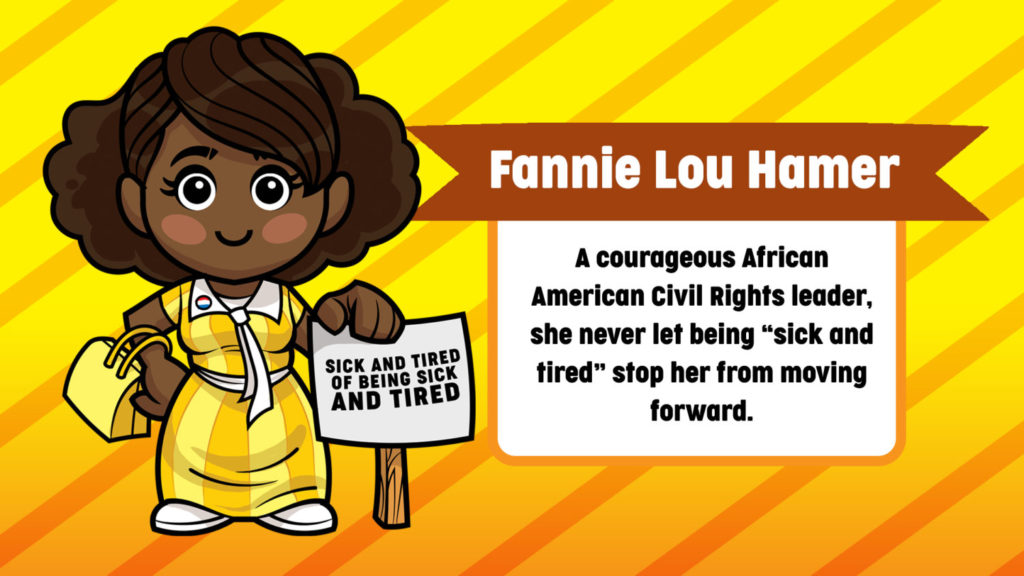
Heroes of Color
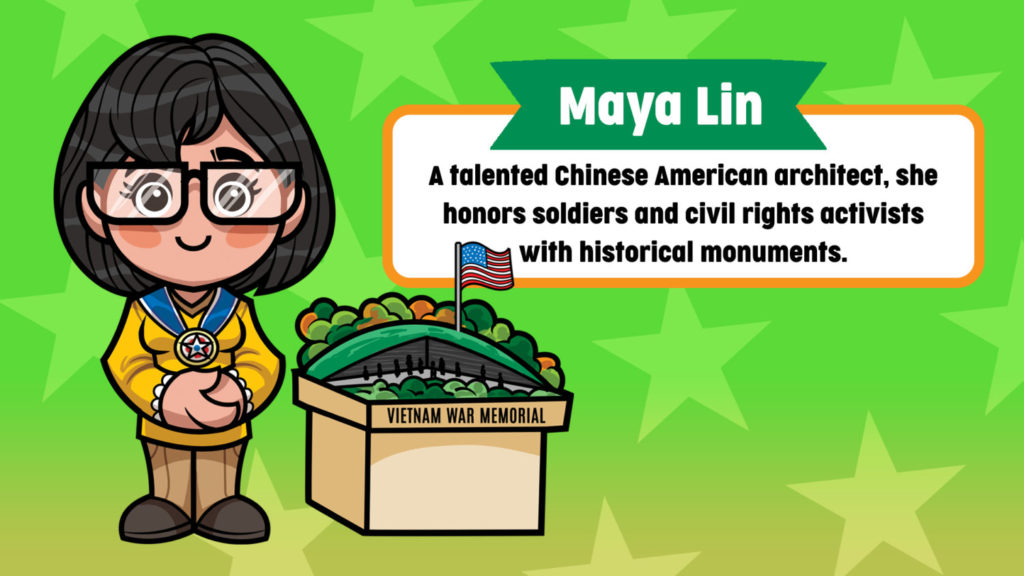
Heroes of Color
Advertising disclosure: We may receive compensation for some of the links in our stories. Thank you for supporting LA Weekly and our advertisers.

